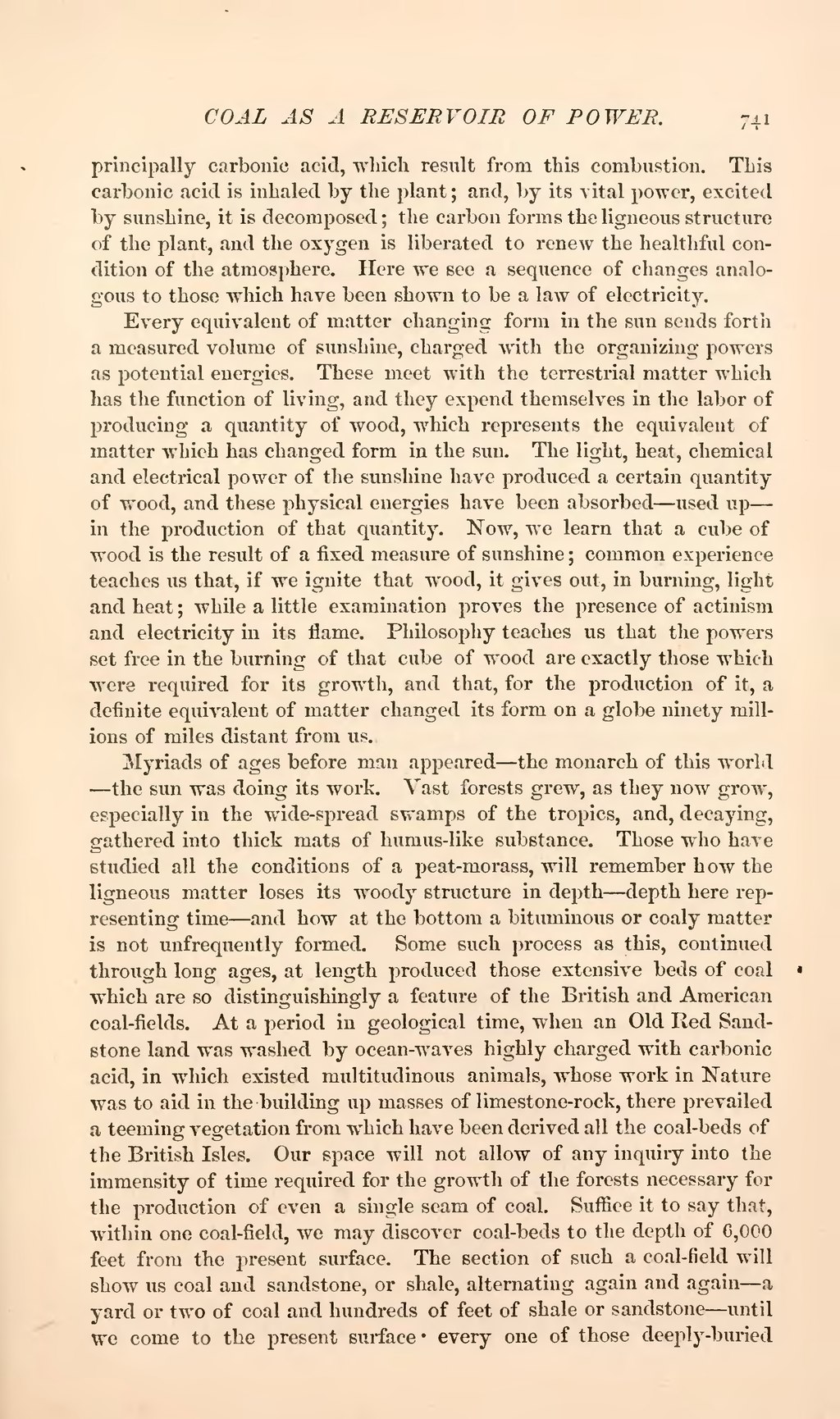principally carbonic acid, which result from this combustion. This carbonic acid is inhaled by the plant; and, by its vital power, excited by sunshine, it is decomposed; the carbon forms the ligneous structure of the plant, and the oxygen is liberated to renew the healthful condition of the atmosphere. Here we see a sequence of changes analogous to those which have been shown to be a law of electricity.
Every equivalent of matter changing form in the sun sends forth a measured volume of sunshine, charged with the organizing powers as potential energies. These meet with the terrestrial matter which has the function of living, and they expend themselves in the labor of producing a quantity of wood, which represents the equivalent of matter which has changed form in the sun. The light, heat, chemical and electrical power of the sunshine have produced a certain quantity of wood, and these physical energies have been absorbed—used up—in the production of that quantity. Now, we learn that a cube of wood is the result of a fixed measure of sunshine; common experience teaches us that, if we ignite that wood, it gives out, in burning, light and heat; while a little examination proves the presence of actinism and electricity in its flame. Philosophy teaches us that the powers set free in the burning of that cube of wood are exactly those which were required for its growth, and that, for the production of it, a definite equivalent of matter changed its form on a globe ninety millions of miles distant from us..
Myriads of ages before man appeared—the monarch of this world—the sun was doing its work. Vast forests grew, as they now grow, especially in the wide-spread swamps of the tropics, and, decaying, gathered into thick mats of humus-like substance. Those who have studied all the conditions of a peat-morass, will remember how the ligneous matter loses its woody structure in depth—depth here representing time—and how at the bottom a bituminous or coaly matter is not unfrequently formed. Some such process as this, continued through long ages, at length produced those extensive beds of coal which are so distinguishingly a feature of the British and American coal-fields. At a period in geological time, when an Old Red Sandstone land was washed by ocean-waves highly charged with carbonic acid, in which existed multitudinous animals, whose work in Nature was to aid in the building up masses of limestone-rock, there prevailed a teeming vegetation from which have been derived all the coal-beds of the British Isles. Our space will not allow of any inquiry into the immensity of time required for the growth of the forests necessary for the production of even a single seam of coal. Suffice it to say that, within one coal-field, we may discover coal-beds to the depth of 6,000 feet from the present surface. The section of such a coal-field will show us coal and sandstone, or shale, alternating again and again—a yard or two of coal and hundreds of feet of shale or sandstone—until we come to the present surface every one of those deeply-buried
